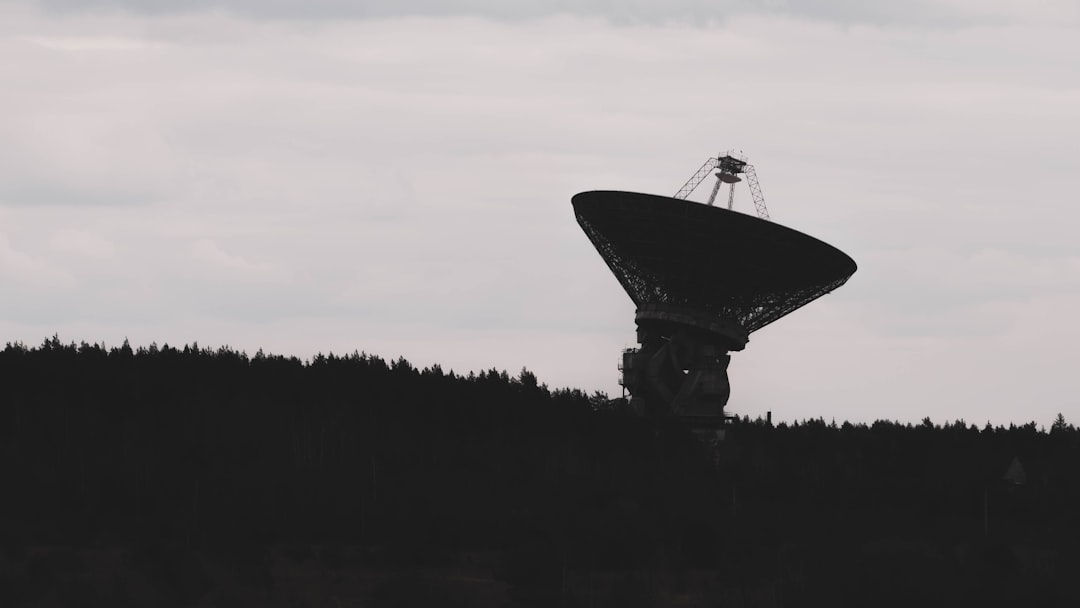Cislunar space, the region between the Earth and the Moon, has emerged as a focal point for both governmental and commercial interests in recent years. As humanity sets its sights on lunar exploration and potential colonization, understanding this domain becomes increasingly critical. Cislunar space is not merely a void; it is a complex environment filled with opportunities and challenges that require comprehensive awareness and monitoring.
The concept of Cislunar Space Domain Awareness (CSDA) encompasses the ability to detect, track, and characterize objects and activities within this region, ensuring safe navigation and sustainable operations. The significance of CSDA extends beyond mere observation; it plays a pivotal role in the strategic planning of missions, the protection of assets, and the prevention of potential conflicts. As nations and private entities prepare for a new era of lunar exploration, the need for robust systems that can provide real-time data and insights into cislunar activities becomes paramount.
This article delves into the importance of advancing technology in CSDA, the current challenges faced, emerging technologies, and the collaborative efforts necessary to ensure a secure and prosperous future in cislunar space.
Key Takeaways
- Cislunar space domain awareness is crucial for monitoring and understanding activities in the space between Earth and the Moon.
- Advancing technology is essential for improving cislunar space domain awareness and enhancing our ability to track and analyze objects in this region.
- Current challenges in cislunar space domain awareness include limited tracking capabilities, potential collisions, and the need for international cooperation.
- Emerging technologies such as advanced sensors, artificial intelligence, and autonomous systems are key for enhancing cislunar space domain awareness.
- Satellites play a critical role in cislunar space domain awareness by providing data for tracking and monitoring activities in this region.
Importance of Advancing Technology in Cislunar Space Domain Awareness
Advancing technology in Cislunar Space Domain Awareness is essential for several reasons. First and foremost, as more spacecraft venture into this region, the complexity of tracking and managing these assets increases significantly. Enhanced technological capabilities can facilitate better situational awareness, allowing operators to make informed decisions regarding navigation and mission planning.
This is particularly crucial as both governmental agencies and private companies aim to establish a sustainable presence on the Moon, necessitating a comprehensive understanding of the operational environment. Moreover, technological advancements can lead to improved safety measures. With an increasing number of satellites and spacecraft operating in cislunar space, the risk of collisions rises.
By employing sophisticated tracking systems and predictive analytics, stakeholders can mitigate these risks effectively. The integration of advanced sensors, artificial intelligence, and machine learning algorithms can enhance the ability to predict potential hazards, ensuring that missions can proceed without jeopardizing human life or valuable equipment.
Current Challenges in Cislunar Space Domain Awareness

Despite the growing recognition of the importance of Cislunar Space Domain Awareness, several challenges persist that hinder progress in this area. One significant issue is the lack of standardized protocols for data sharing among various stakeholders. Different countries and organizations often operate under disparate frameworks, leading to fragmented information that complicates collaborative efforts.
This lack of cohesion can result in gaps in situational awareness, making it difficult to respond effectively to emerging threats or opportunities. Another challenge lies in the technological limitations currently faced by monitoring systems. Many existing tracking systems are designed primarily for low Earth orbit (LEO) operations and may not be adequately equipped to handle the unique conditions present in cislunar space.
The vast distances involved, coupled with the dynamic nature of this environment, necessitate the development of new technologies capable of providing accurate and timely data. Without addressing these challenges, the potential for safe and effective operations in cislunar space remains at risk.
Emerging Technologies for Cislunar Space Domain Awareness
| Technology | Application | Advantages |
|---|---|---|
| Laser Communication | High-speed data transfer between cislunar assets | Reduced signal latency and increased data transfer rates |
| Autonomous Navigation | Self-guided spacecraft for cislunar missions | Reduces reliance on ground-based navigation systems |
| Space Situational Awareness (SSA) Sensors | Tracking and monitoring of objects in cislunar space | Enhanced space traffic management and collision avoidance |
| Artificial Intelligence (AI) for Space Surveillance | Analyzing and interpreting data from cislunar space | Improves detection and characterization of space objects |
As the demand for enhanced Cislunar Space Domain Awareness grows, so too does the development of emerging technologies aimed at addressing existing challenges. One promising area is the use of advanced sensor networks that can provide comprehensive coverage of cislunar space. These sensors can be deployed on satellites or lunar bases to monitor activities continuously, offering real-time data on both natural phenomena and human-made objects.
Additionally, artificial intelligence (AI) is playing an increasingly vital role in processing vast amounts of data generated by these sensors. Machine learning algorithms can analyze patterns and predict potential collisions or other hazards, enabling operators to take proactive measures. Furthermore, AI can assist in automating routine monitoring tasks, allowing human operators to focus on more complex decision-making processes.
The integration of these technologies holds great promise for enhancing situational awareness in cislunar space.
Role of Satellites in Cislunar Space Domain Awareness
Satellites are integral to achieving effective Cislunar Space Domain Awareness. They serve as the primary means of monitoring activities within this region, providing critical data on both natural celestial events and human operations. By deploying a network of satellites specifically designed for cislunar monitoring, stakeholders can achieve a more comprehensive understanding of the environment.
These satellites can be equipped with advanced imaging capabilities, allowing them to capture high-resolution images of lunar surfaces and track spacecraft movements with precision. Additionally, they can facilitate communication between various entities operating in cislunar space, ensuring that information flows seamlessly among different stakeholders. As satellite technology continues to evolve, their role in enhancing CSDA will only become more pronounced.
Collaboration and Cooperation in Cislunar Space Domain Awareness

Collaboration among nations and private entities is essential for advancing Cislunar Space Domain Awareness effectively. Given the shared interests in lunar exploration and resource utilization, fostering partnerships can lead to more robust monitoring systems and improved data sharing practices. International cooperation can help establish common standards for tracking and reporting activities in cislunar space, reducing fragmentation and enhancing overall situational awareness.
Moreover, collaborative efforts can facilitate joint missions that leverage the strengths of various stakeholders. By pooling resources and expertise, countries can undertake more ambitious projects that would be challenging to accomplish independently. This spirit of cooperation not only enhances CSDA but also promotes peaceful exploration and utilization of lunar resources, setting a positive precedent for future endeavors beyond Earth.
Impact of Cislunar Space Domain Awareness on Space Exploration and Commercial Activities
The implications of enhanced Cislunar Space Domain Awareness extend far beyond safety; they also significantly impact space exploration and commercial activities. As private companies increasingly enter the lunar market, having reliable data on cislunar conditions becomes crucial for their success. Accurate monitoring can inform mission planning, resource extraction strategies, and even tourism ventures aimed at lunar visitors.
Furthermore, improved CSDA can facilitate international collaboration on scientific research initiatives. By sharing data on lunar geology or environmental conditions, researchers from different countries can work together more effectively to advance our understanding of the Moon and its potential for supporting human life. This collaborative approach not only accelerates scientific discovery but also fosters goodwill among nations engaged in space exploration.
Policy and Regulatory Considerations for Cislunar Space Domain Awareness
As interest in cislunar space grows, so too does the need for clear policies and regulations governing activities within this domain. Establishing a framework for Cislunar Space Domain Awareness is essential to ensure that all stakeholders operate under agreed-upon guidelines that promote safety and sustainability. This includes defining responsibilities for monitoring activities, sharing data, and addressing potential conflicts that may arise from competing interests.
International treaties may need to be revisited or newly established to address the unique challenges posed by cislunar operations. Policymakers must consider how best to balance national interests with global cooperation while ensuring that all parties adhere to established norms regarding space exploration. By proactively addressing these regulatory considerations, stakeholders can create an environment conducive to safe and responsible activities in cislunar space.
Future Prospects for Cislunar Space Domain Awareness Technology
Looking ahead, the future prospects for Cislunar Space Domain Awareness technology appear promising. As advancements in sensor technology continue to evolve, stakeholders can expect more sophisticated systems capable of providing unparalleled insights into cislunar activities. The integration of AI-driven analytics will further enhance decision-making processes by enabling real-time assessments of potential risks.
Moreover, as commercial interests expand into cislunar space, there will likely be increased investment in developing innovative solutions tailored specifically for this environment. This could lead to breakthroughs in satellite design, communication systems, and data processing capabilities that will revolutionize how stakeholders approach CSDThe ongoing collaboration between governments and private entities will be crucial in driving these advancements forward.
Ethical and Security Implications of Cislunar Space Domain Awareness
While the benefits of enhanced Cislunar Space Domain Awareness are clear, ethical and security implications must also be considered.
As nations develop advanced monitoring systems capable of tracking activities across cislunar space, it is essential to establish ethical guidelines that govern their use.
Additionally, ensuring cybersecurity within CSDA systems is paramount to prevent malicious actors from exploiting vulnerabilities or disrupting operations. Stakeholders must prioritize developing robust security measures that protect sensitive data while promoting transparency among users. By addressing these ethical considerations proactively, stakeholders can foster a responsible approach to Cislunar Space Domain Awareness that prioritizes safety and cooperation.
The Path Forward for Advancing Cislunar Space Domain Awareness Technology
In conclusion, advancing Cislunar Space Domain Awareness technology is vital for ensuring safe navigation and sustainable operations within this burgeoning domain.
Emerging technologies such as advanced sensors and AI-driven analytics hold great promise for enhancing situational awareness while fostering international cooperation among stakeholders.
The path forward requires a concerted effort from governments, private entities, researchers, and policymakers alike to establish clear guidelines that promote responsible exploration while safeguarding ethical considerations. By prioritizing collaboration over competition and investing in technological advancements tailored specifically for cislunar space, humanity can unlock new opportunities for exploration and commercial activities while ensuring a secure future beyond Earth’s atmosphere.
Cislunar space domain awareness technology is becoming increasingly crucial as more nations and private entities set their sights on the space between Earth and the Moon. This region, known as cislunar space, is expected to become a bustling hub of activity in the coming decades. To effectively monitor and manage this area, advanced technologies are being developed to track objects and ensure safe navigation. An interesting article that delves into the intricacies of this technology and its implications for future space exploration can be found on Real Lore and Order. For more insights, you can read the full article here.
WATCH THIS! 🚀 Why The Moon Is The Next Battlefield: The Geopolitics of Cislunar Space
FAQs
What is cislunar space domain awareness technology?
Cislunar space domain awareness technology refers to the tools and systems used to monitor and track objects in the space between the Earth and the Moon, known as cislunar space. This technology helps to ensure the safety and security of space activities in this region.
Why is cislunar space domain awareness important?
Cislunar space domain awareness is important for several reasons. It helps to prevent collisions between spacecraft and debris, enables the monitoring of potential threats to space assets, and supports the safe and sustainable exploration and utilization of cislunar space.
What are some examples of cislunar space domain awareness technology?
Examples of cislunar space domain awareness technology include telescopes, radar systems, and other sensors that can track and monitor objects in cislunar space. Additionally, there are plans to develop dedicated satellites and spacecraft for cislunar space domain awareness.
How does cislunar space domain awareness technology differ from other space domain awareness technologies?
Cislunar space domain awareness technology differs from other space domain awareness technologies in that it is specifically focused on monitoring and tracking objects in the region between the Earth and the Moon, rather than in Earth’s orbit or in deep space.
Who is developing cislunar space domain awareness technology?
Various space agencies, including NASA and international partners, as well as private companies, are involved in the development of cislunar space domain awareness technology. Additionally, academic and research institutions are contributing to the advancement of this technology.
